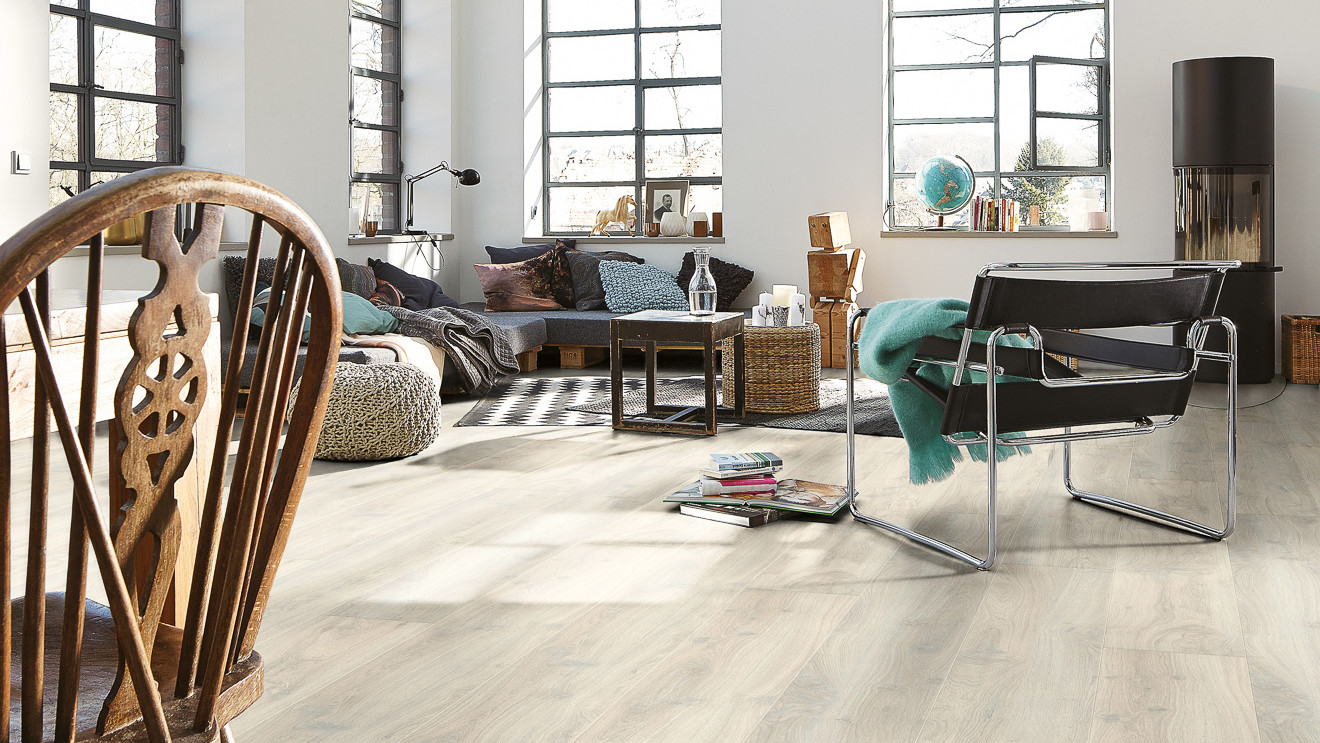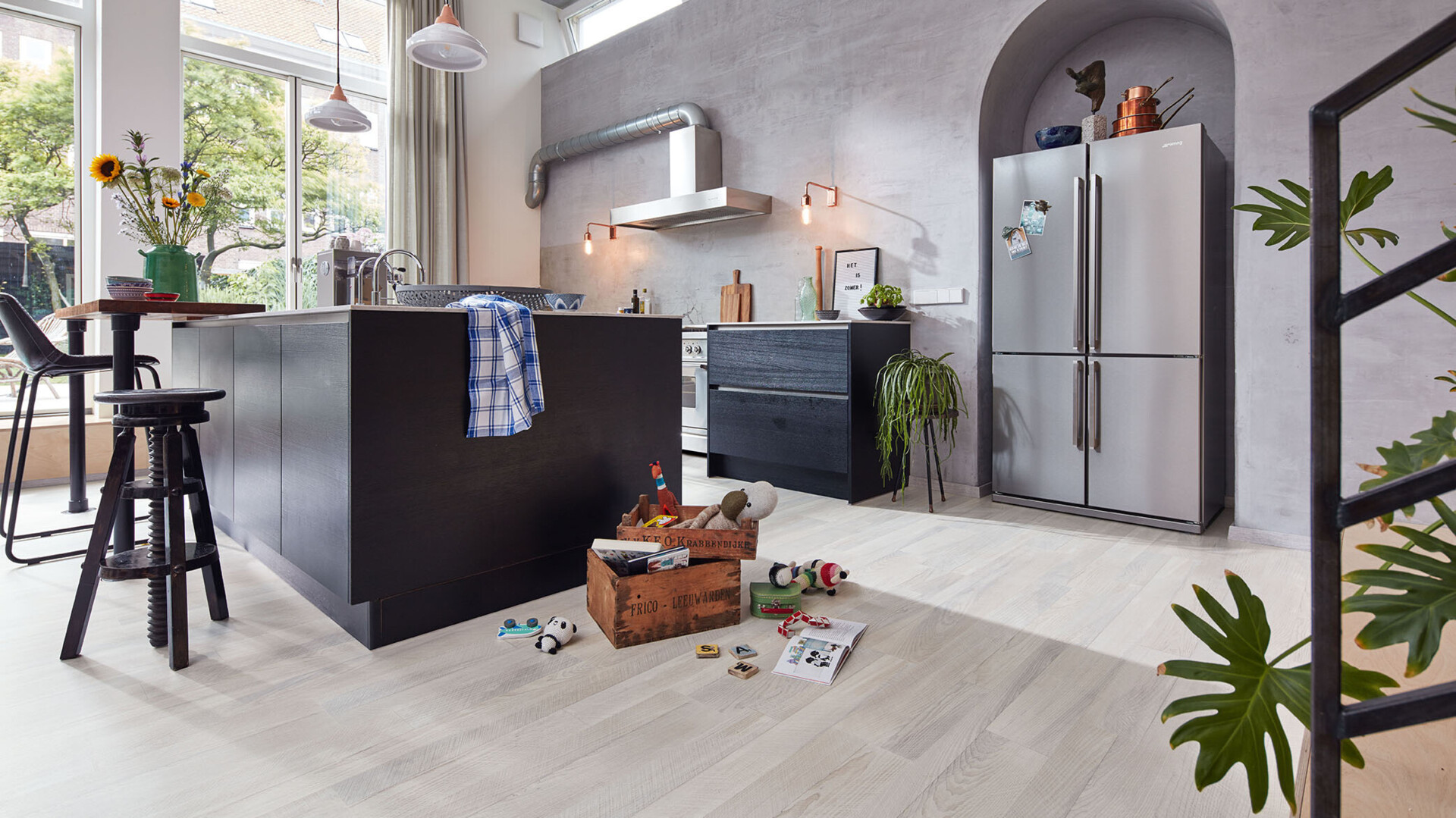
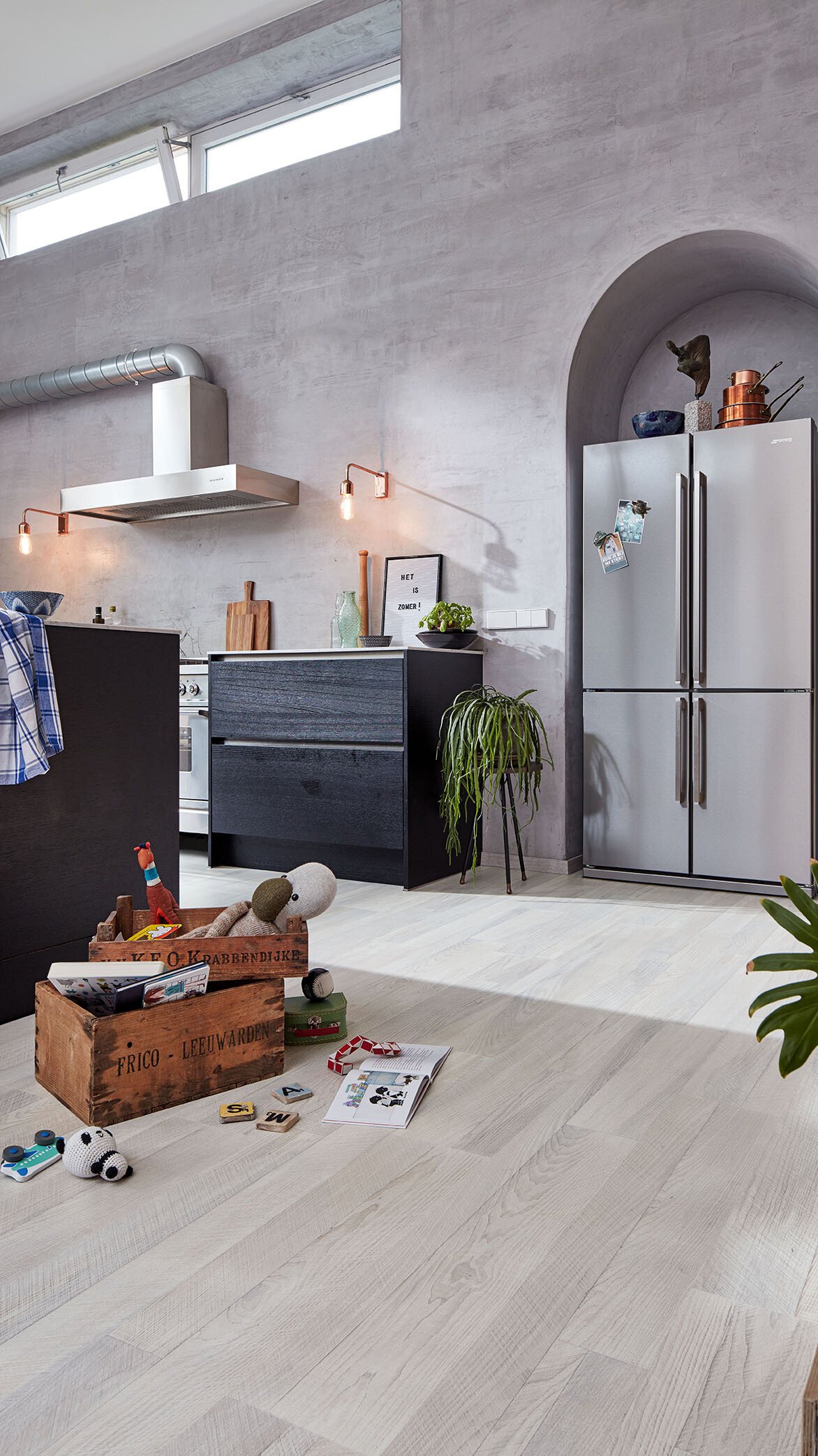

White is considered a neutral colour, one that can be easily combined with many other shades. Harmonious overall concepts, for example, can be implemented entirely in white. But if you’re worried that doing so will create rather a clinical ambience, you can add a few lively contrasts. Dark brown tones or black may be suitable, for example, but bright colours, too – the combination with white prevents these tones from appearing too extreme or gaudy.
Because bright surfaces reflect much of the light while absorbing little, rooms with white floors appear friendlier and larger than rooms with darker flooring.
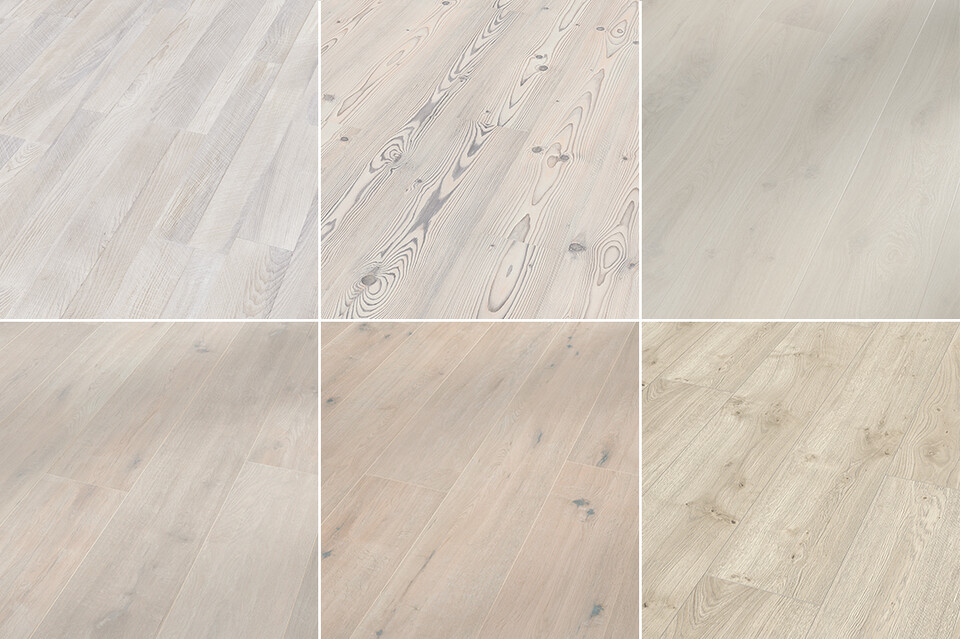
White flooring doesn’t have to mean a sterile, single-tone surface or cold tiles. This standard can be avoided, for example, by cork flooring that is warm underfoot and has the appropriate colouring. But even laminate and parquet floorings can shine in a pleasant white without appearing cold or boring.
Since laminate is given its design by incorporating a printed decorative layer, there are no limits to its possible appearances. Would you like a uniform white design, a marbled look or a wood structure in the right colour tone? Anything is possible. Parquet flooring also offers amazing variety – especially if it is made of oak. The material can be pre-treated in a variety of ways and can therefore adopt different colours. For example, the real wood flooring range also includes some white nuances that are created by lacquering or leaching the material.
Anyone who has ever spent a long time looking for the perfect wall colour or wedding dress knows too well that there is more than just one shade of white. The palette runs from clear snow white to marzipan and cream nuances. In addition to personal taste, the effect you want to achieve with the flooring, such as more brightness in the room or an emphasis on certain objects, is also important.
The nature of the flooring must also be considered: Do you want the overall appearance to be as uniform as possible or do you want structures dictated by the material, such as wood grain or cork pores, to be clearly visible? Is the white intended to cover everything, or does the material’s own colour tone show through? The difference between glossy and matt surfaces also influences the effect that the floor exerts on the observer.
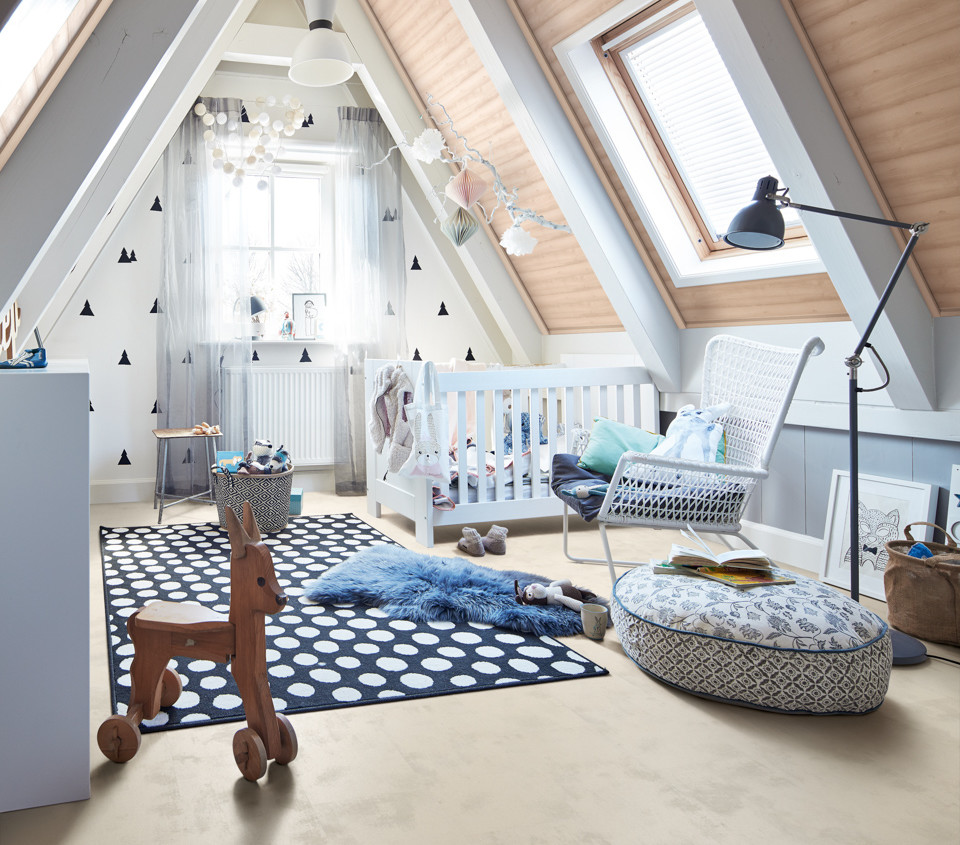
Floorings in different shades of white can be combined in many ways. You can choose whatever appeals to you. Naturally, each combination exerts its own effect. If you’re looking for a specific effect, you should give considerable thought to choosing a colour.
If you want to stay within a single colour family and also apply white tones to the wall and ceiling design, a calming, uniform overall picture is the result. The space loses its contours and the viewer’s gaze can wander around the room unhindered. At the same time, the space seems larger and, even with minimal light, the room seems brighter than before.
A spacious hall with a light-coloured, low ceiling, on the other hand, can also look good with dark wall paints. They may seem to take from the room’s area, but at the same time they appear to add height. Too much of a good thing? If you want to create specific accents, it is often enough to paint just a feature wall in order to focus attention on a specific area. In the bedroom, say, this can be the wall where the head of the bed stands, while in the living room it could be the area around the TV. A patterned wallpaper can achieve the same effect. If you’d like to create an illusion of width in doing so, you should look out for brighter shades when choosing your paint.
For a rustic country house character that still looks bright and inviting, a real wood floor can be combined with matching colour panels that cover the wall or ceiling.
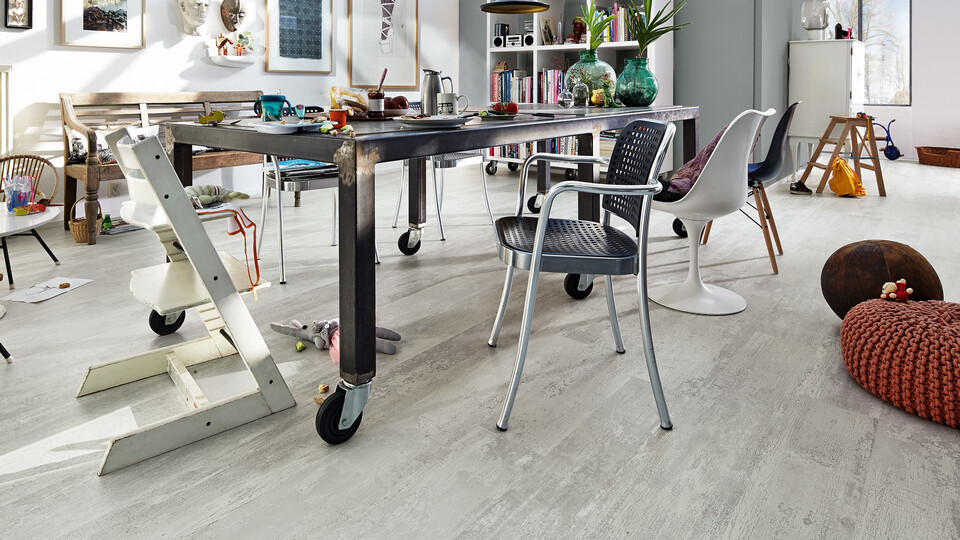
White floorings also prove their versatility when it comes to furnishings. If the aim is to make the room seem somewhat dreamy and romantic, adding furniture in white or soft pastel shades is also a good choice. Lovers of the Scandinavian hygge style, which has been popular for some years now, swear by this combination.
The combination of a white interior design with dark pieces of furniture is also currently in demand. If both colour accents are set and clear, straightforward designs are chosen, it results in the creation of a light retro charm.
If you’d like the focus to fall on the decor, such as presenting shabby chic furniture in the appropriate light, it’s a good idea to choose white for the flooring. Why? Because the floor is kept in the background thanks to its neutral, discreet design and the furniture and its special features do not have to take second place. Signs of use and unevenness in the furniture material can be shown to their best advantage.
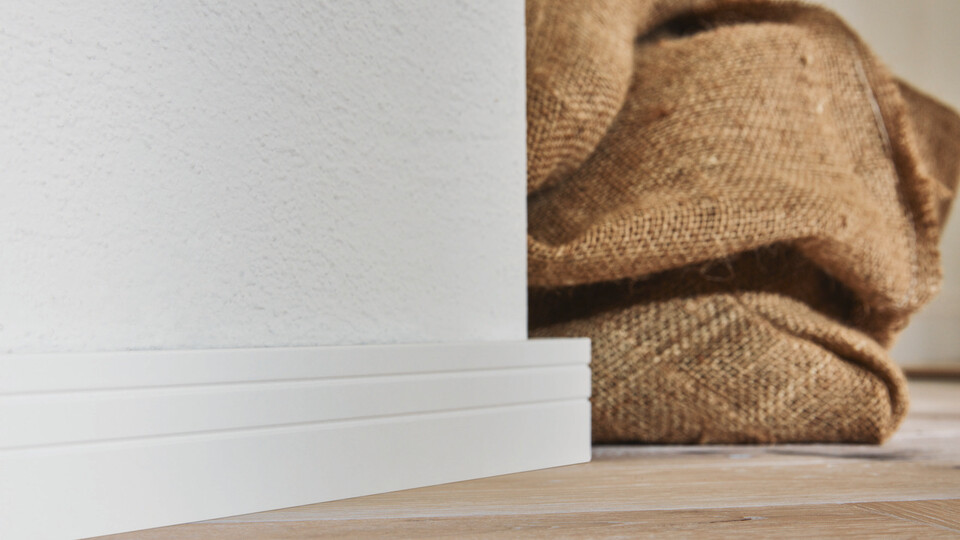
Their effect is often underestimated: Skirting boards round off the overall picture produced by the white flooring. If a certain combination of colour and material dominates, say to change the size appearance of a room, the skirting boards should also fit the picture.
The effect of the white floor can even be reinforced by skirting boards with an identical look. This appears to lengthen the floor while reducing the height of the wall. If you would like to reverse this effect, you can ensure that the skirting board offers a clear contrast with the flooring. The effectiveness of the optical illusion varies with the height of the skirting boards.
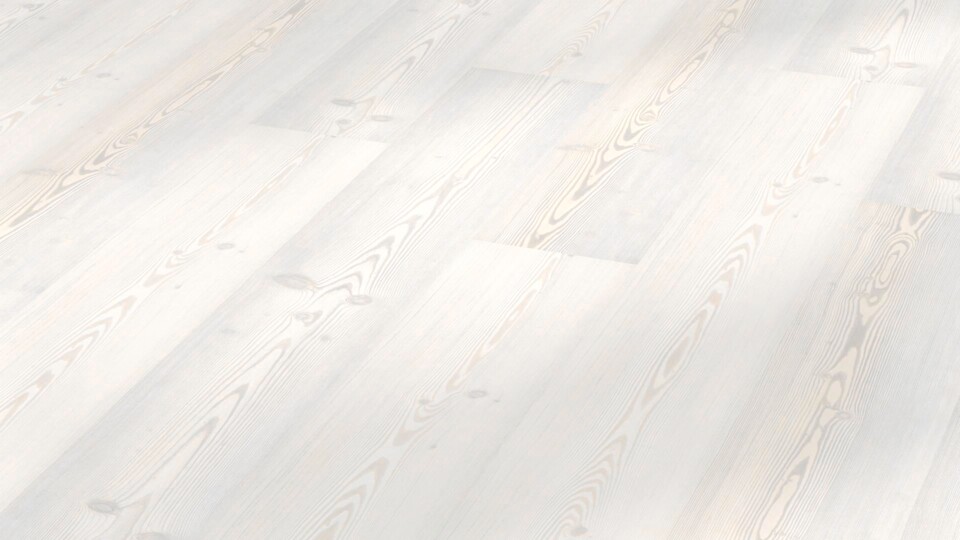
Of course, there’s one thing that can’t be glossed over: dirt shows up much more clearly on a light floor than on dark floorings. However, this doesn’t have to mean that the mop must always be within reach and the family dog must be banned from the house. This is because a laminate flooring is relatively easy to maintain, even one in glowing snow white: dirt barely clings to the simple and antistatic surface of the flooring. It’s therefore usually enough to give the floor a quick sweep to remove coarse dust and dirt. And if you wipe the floor, make sure the cloth or mop is only a little damp.
White floors are not only popular right now, they also have the potential to become a long-standing favourite of interior decoration.
